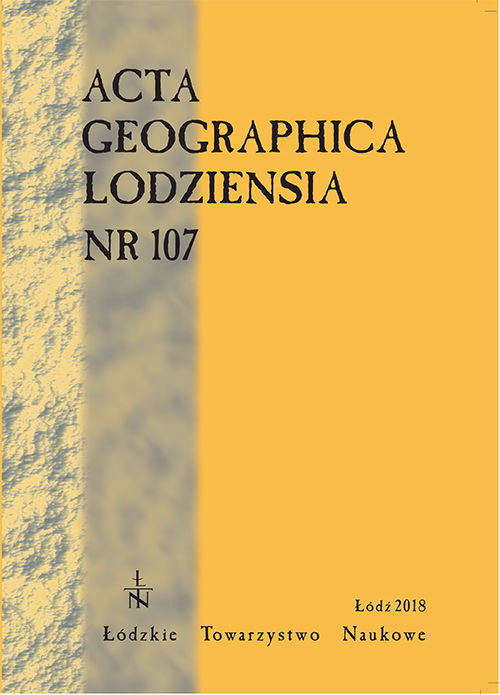Cechy sedymentologiczne i warunki depozycji osadów stożka akumulacyjnego w dolinie rzeki Sertejki (zachodnia Rosja)
Sedimentological features and depositional conditions of deposits of the accumulative fan in the Serteyka River valley (Western Russia)
Author(s): Wiktor Piech, Piotr Kittel, Andrey Nikolaevich Mazurkevich, Elena Pavlovskaia, Eduard Kazakov, Yulia Teltevskaya, Krzysztof Błaszczyk, Bartosz KotrysSubject(s): Regional Geography, Environmental Geography
Published by: Łódzkie Towarzystwo Naukowe
Keywords: slope deposits; erosion cut; accumulation; human impact; Eastern Europe
Summary/Abstract: The article focuses on the analysis of climatic and anthropogenic factors affecting the development of the accumulative fan in the lower sector of the Serteyka River valley in Western Russia. Within the fan deposits, several layers of sediments were identified, i.e. three units of deluvium (lower, central and upper), proluvium and also colluvium and tillage diamicton, which differ in textural and structural features. The grain size analysis was made and the textural features of the studied slope sediments were compared: mean grain diameter, skewness, standard deviation, kurtosis. Then, the relations of selected grain size parameters were interpreted. The obtained results indicate a rather small transformation of the accumulative fan in relations to the textural features of the source material. Lower deluvium is characterized by very weak lamination and light brown yellow color, the central deluvium has a brown color and the textual indicators are similar. Subhorizontal stratification is significant for the upper deluvium. This layer is characterized also by fluctuations in the value of sedimentological indices. Tillage diamicton is represented by thickened and massive sediment formed as a result of mixing of the upper deluvium by plowing. All featured series have a low content of calcium carbonate. The development of the fan began during the pessimum of the Little Ice Age due to climate change and an increase in the number of heavy rains, an also as a result of rising human impact. Six stages of the development of the studied relief form were identified, which are mainly associated with changes in land use and an increase in the intensity of anthropopression over the last 300 years.
Journal: Acta Geographica Lodziensia
- Issue Year: 2018
- Issue No: 107
- Page Range: 215-238
- Page Count: 24
- Language: Polish

